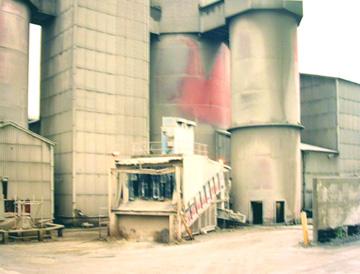Jim Cooke and Sylvie Readman
dal 8/7/2004 al 12/9/2004
Segnalato da
8/7/2004
Jim Cooke and Sylvie Readman
Tatar Gallery, Toronto
Cooke and Readman compliment each other exceptionally well, as if they were meant to be exhibited together. The landscapes presented in these works are both familiar and strange. They capture your imagination as well as your memory, and leave you with mixed feelings of bittersweet relief and regret, as if you, too, have visited this place in dreams and cannot return.

The Tatar Gallery presents an exhibition of works by Jim Cooke and Sylvie
Readman. Cooke and Readman compliment each other exceptionally well, as if they
were meant to be exhibited together. The landscapes presented in these works are
both familiar and strange. They capture your imagination as well as your memory,
and leave you with mixed feelings of bittersweet relief and regret, as if you,
too, have visited this place in dreams and cannot return.
Inspired by his upbringing in the English town of Coventry, Jim Cooke shifts his
focus in a new collection of works at the Tatar Gallery from his usual
fascination with monuments of Arcadian beauty to those of a more personal
Arcadia – his own childhood in England's industrial midlands. In the forward
to his book, Re-Placing Arcadia, Cooke pays tribute to those that have inspired
his vision from the precision photography of Charles Sheeler to Stephen Shore,
Toshio Shibata and celebrated Canadian photographer Edward Burtynsky among
others. Cement Series, taken over a year-long period at a Rugby Cement factory,
are an epic tribute to the monumental architecture built around a failed
economic promise.
Using and 8 x 10 camera, these large-format, colour-saturated photographs
document the last days of the factory, and capture their subjects in meticulous,
archaeological detail. Cooke's is a documenter's view, an outsider's view,
despite his deeply personal connection to the landscape of factory life. His
work expresses this ironic inner conflict, evoking contrasting emotions of
relief and regret – relief at his deliverance from a working-class existence,
yet regret at the distance that this places between him and his past.
Nevertheless, it is this distance that allows him to see with such clarity. A
respectful objectivity accompanies the intense emotion of these works. Cement
Series reveals Cooke as a talented guide through a world both foreign and
familiar.
This sense of familiar distance is equally present in the work of Quebec
photographer Sylvie Readman, whose exhibit, Point de Fusion, accompanies
Cooke's. For Readman, photography is a language, and Point de Fusion is a
beautiful investigation into the processes of this language. Readman strives to
detach the medium of artistic representation from the represented subject, in an
attempt to make an ''observation of the photographic language from within.''
These minimalist, black and white photographs are produced through various
photographic techniques: lengthy exposures are combined with multiple exposures
on a single negative to create a dreamlike quality. Point de Fusion, like
Cooke's Cement Series, is also a tribute to the monuments of our world. These
works focus on simple, geometric buildings which stand, isolated along the
horizon line. The images themselves possess a fluid, nearly transparent
dynamism, which ''withdraws familiarity'' from images that are as recognizable
as a recurring dream.
Tatar Gallery
183 Bathurst Street (north of Queen)
Suite200, Toronto
Ontario Canada
M5T2R7



